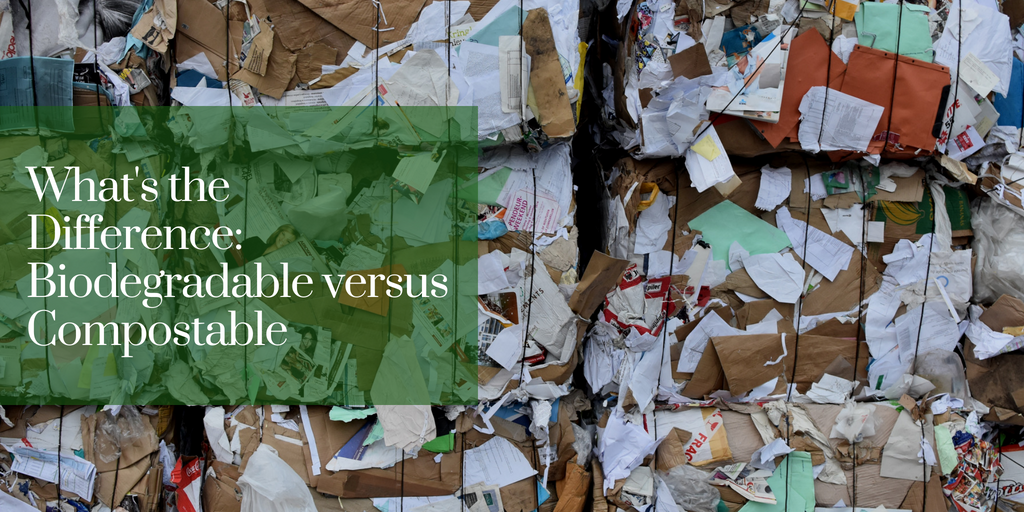Biodegradable versus compostable. Is there a difference? Chances are you've been using the words "biodegradable" and "compostable" interchangeably. But the fact is, they are quite different. Here's how...
A biodegradable material is not necessarily compostable. A compostable material is always biodegradable. (bagtoearth.com)
Biodegradable
When something is biodegradable, it means that it will eventually break down and return to soil and water.
In order for packaging products or materials to qualify as biodegradable, they must completely break down and decompose into natural elements within a short time after disposal – typically a year or less (Heritage Paper).
Examples of biodegradable materials: corrugated cardboard, paper, rope, orange peels, cotton
Compostable
When something is compostable, it is similar to biodegradable in that the material is broken down. The difference is that once it breaks down, it provides nutrients to the earth.
A compost requires the right level of heat, water, and oxygen to support microbes and support the breakdown. Products that compost leave no visible, distinguishable, or toxic residue and generally help improve the soil (The Do Something Project).
Examples of compostable materials are food, leaves, grass clippings, tea leaves, and bags.
Biodegradable versus Compostable
.png?width=1000&name=biodegradable-vs-compostable+(1).png)
As manufacturing eco-friendly and sustainable packaging becomes common practice in the industry, remember your packaging glues.
Want to learn more about our natural, recyclable glues? Contact our team today to discuss your eco-friendly packaging project.







